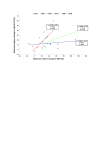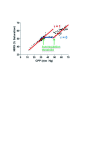Recent advances in cerebral oximetry. Assessment of cerebral autoregulation with near-infrared spectroscopy: myth or reality?
- PMID: 29026526
- PMCID: PMC5583743
- DOI: 10.12688/f1000research.11351.1
Recent advances in cerebral oximetry. Assessment of cerebral autoregulation with near-infrared spectroscopy: myth or reality?
Abstract
In recent years, the feasibility of near-infrared spectroscopy to continuously assess cerebral autoregulation has gained increasing interest. By plotting cerebral oxygen saturation over blood pressure, clinicians can generate an index of autoregulation: the cerebral oximetry index (COx). Successful integration of this monitoring ability in daily critical care may allow clinicians to tailor blood pressure management to the individual patient's need and might prove to be a major step forward in terms of patient outcome.
Keywords: Cerebral autoregulation; NIRS; Oximetry.
Conflict of interest statement
Competing interests: AM has received lecture fees from Medtronic (INVOS) and Sorin (NIRO). SD declares that he has no competing interests.No competing interests were disclosed.No competing interests were disclosed.
Figures




References
-
- Lassen NA: Cerebral blood flow and oxygen consumption in man. Physiol Rev. 1959;39(2):183–238. - PubMed
-
- Drummond JC: The lower limit of autoregulation: time to revise our thinking? Anesthesiology. 1997;86(6):1431–3. - PubMed
Publication types
LinkOut - more resources
Full Text Sources
Other Literature Sources

